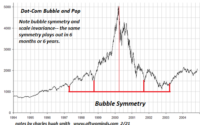ECB’s Push to Raise Borrowing Costs Runs Up Against Wall of Cash
(Bloomberg) — Lenders’ borrowing costs are trailing the European Central Bank’s benchmark by the most on record, highlighting the challenge officials face to tighten monetary conditions after years of loose policy left markets awash with trillions of euros of liquidity.
Most Read from Bloomberg
The euro short-term rate, or ESTR, is currently 10.5 basis points below the central bank’s deposit rate, which is at its highest in 15 years. That’s close to the biggest gap on record — not counting month-end spikes for banks’ accounting purposes — which was reached earlier this week.
It’s a sign the ECB’s aggressive rate hikes aren’t rippling out to banks and the economy, making it much harder for the central bank to meet its 2% inflation target. ECB Chief Economist Philip Lane and Executive Board member Isabel Schnabel have both pointed to the dangers of the so-called transmission mechanism not functioning properly.
Liquidity Galore
Excess liquidity is at a two-month high of more than €4.1 trillion ($4.5 trillion), up almost 3% since the start of the month, ECB data show. That’s due in part to the central bank’s move to discourage national governments from keeping funds parked on its deposits, as well as years of ultra-low funding costs.
At the beginning of May, policy makers changed the interest rate for the deposits to 20 basis points below the ESTR, compared with a rate equal to the ESTR before. Societe Generale SA says the liquidity jump since the start of the month may be due to national treasuries reinvesting their cash elsewhere.
Relief, however, may be at hand.
Piet Christiansen, chief strategist at Danske Bank A/S, sees the gap between the bank rate and the benchmark narrowing later this year as lenders tap the spare cash sloshing around the economy to repay ultra-cheap loans, and as the ECB continues to tie up its bond buying program. Meanwhile, a report found banks in the euro zone curbed lending more than anticipated in the first quarter.
Traders are also weighing when officials will start to pivot toward cutting interest rates.
Money markets are wagering the ECB will lower rates by March after first extending the fastest tightening pace to almost 3.75% from 3.25% now, which would match the all-time high set after the turn of the century.
When the reversal might actually happen is “the million-euro question,” Christiansen said.
Most Read from Bloomberg Businessweek
©2023 Bloomberg L.P.
[ad_2]
Source link


